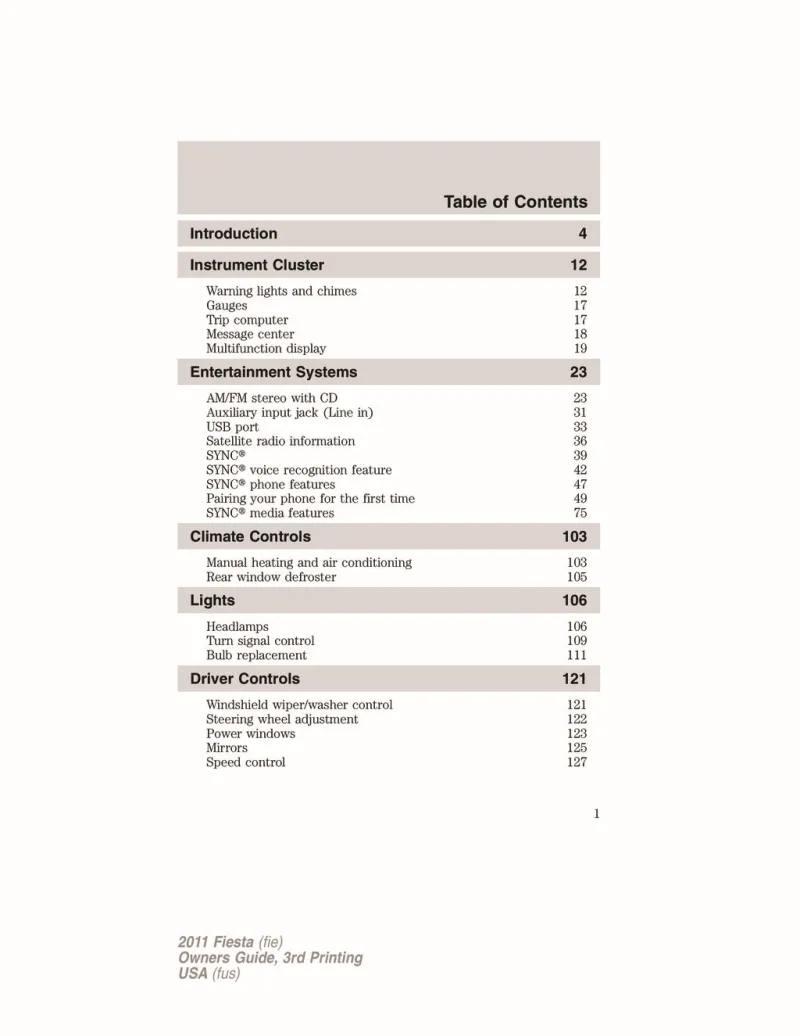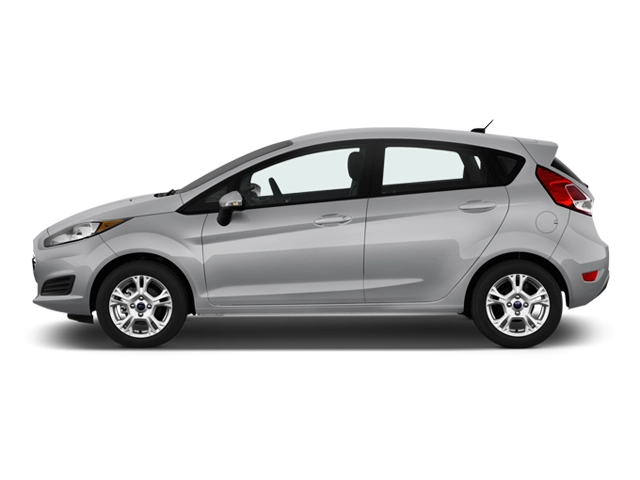2011 Ford Fiesta Owner's Manual

Table of Contents
2011 Ford Fiesta Overview
Introduction
The 2011 Ford Fiesta is a stylish and compact hatchback that redefines the subcompact segment with its nimble handling, efficient fuel economy, and vibrant design. With a focus on urban practicality and youthful energy, the Fiesta caters to both individualistic drivers and those looking for a reliable city commuter. Its blend of functionality and flair makes it a compelling choice for first-time car buyers and seasoned motorists alike.
Powertrains
The 2011 Ford Fiesta comes equipped with a peppy 1.6-liter four-cylinder engine, delivering 120 horsepower and 112 lb-ft of torque. Buyers can choose between a five-speed manual transmission or a six-speed automatic transmission for a smoother driving experience. With impressive fuel economy ratings of 29 mpg in the city and 38 mpg on the highway, the Fiesta ensures that you can enjoy your journey without frequent stops at the gas station.
Trims
Features
In addition to stylish design and responsive handling, the 2011 Fiesta is packed with features for comfort and convenience. Inside, its spacious cabin accommodates up to five passengers, while the rear seats can fold down for extra cargo space. Standard features include air conditioning, power windows, and a six-speaker audio system. Higher trims introduce leather upholstery, heated front seats, and an upgraded premium sound system, enhancing the overall driving experience.
Owner's Manual
The owner’s manual for the 2011 Ford Fiesta serves as an invaluable resource, detailing operating procedures, maintenance schedules, and troubleshooting tips. It includes important information on warranty coverage, safety features, and technology usage, ensuring that owners can take full advantage of what their vehicle has to offer. This comprehensive guide helps facilitate a smoother ownership experience and promotes the longevity of the car.
User manual download
The Ford Fiesta owner manual for the 2011 model year is to be found in PDF downloadable format on this page. The owner manual for the model year 2011 is free and in English, but the repair manuals are usually not easy to get and may cost more.
Manual Questions
Fill the form below and someone will help you!

